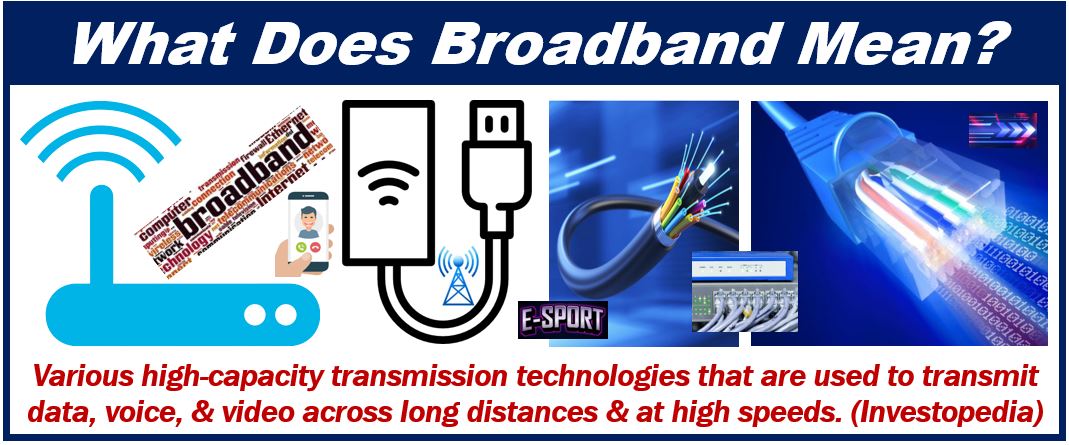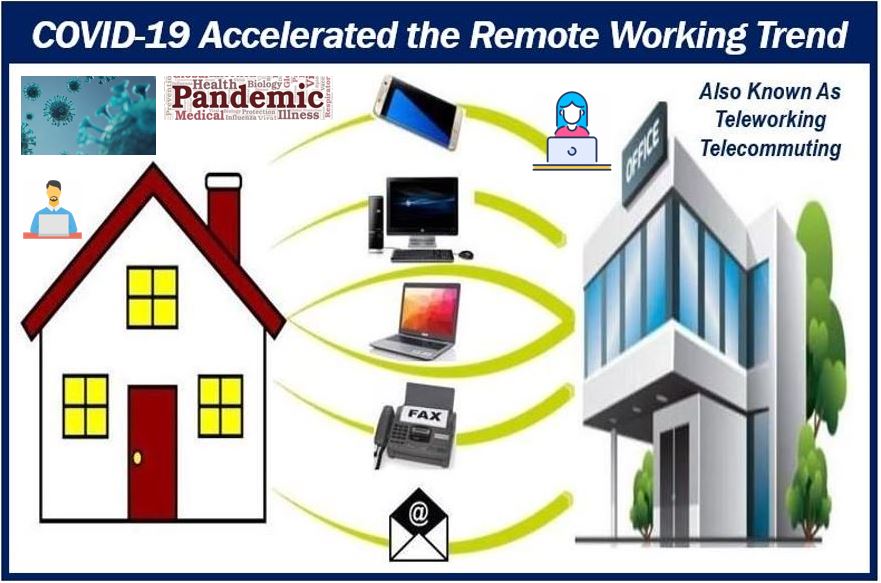Broadband is a term we are all familiar with. However, most of us would find it difficult to impossible to define precisely. Broadband is a wide bandwidth, high-capacity data transmission technique that uses a broad range of frequencies. Thanks to this technique, it can transport a huge number of messages or signals at the same time.
The continuous advancements in broadband, including fiber-optic technology, are setting new benchmarks for internet speed and connectivity, reshaping our expectations for data transmission.
According to the Federal Communications Commission (FCC), broadband or high-speed internet access enables users to reach the internet and internet-related services at much greater speeds than traditional dial-up connections. These speeds can vary widely depending on the technology and specific service package. For residential consumers, broadband typically delivers faster download speeds compared to upload speeds.
When lay people, i.e., not technical people, use the term, they think of a very fast Internet connection.

The US Federal Communications Commission states that for us to class an Internet connection as broadband, it must have at least three Mbps of upload and twenty-five Mbps of download speeds. The letters Mbps or Mbit p/s stand for megabits per second. One megabit equals one million bits. A bit is one unit of information, which is equivalent to the choice between, for example, 1 and 0.
If your household or workplace has broadband, it means that you have high speed Internet access. Access is possible via satellite, DSL (digital subscriber line), cable, wireless, or fiber optics.
How does broadband work?
If you have broadband, you can access data or information online using one of many high-speed transmission technologies. Texts, sounds, images, and videos are transported as bits of data. These bits of data, thanks to broadband transmission technologies, move significantly faster than they do in traditional telephone (dial-up) connections.
Initially, we could only access the Internet via dial-up and a modem. Modems convert signals travelling to and from computers. Dial-up connections were painfully slow.
WebWise, which belongs to the BBC, makes the following comment regarding broadband vs. dial-up:
“The difference between dial-up and broadband is like the difference between a country lane and a motorway. Replace a single band with separate bands for uploading, downloading and voice – and you speed up traffic many times over. Instead of one, narrow band you get a broader band – hence ‘broadband’.”
What can I do with fast Internet?
If you have a broadband connection rather than a dial-up with modem one, you will be able to access and use everything that the Internet currently has to offer. Here is a list of some examples:
- Receive and send emails carrying large files.
- Listen to music and watch movies, series, shows, and documentaries.
- Use video-conferencing services, i.e., see people far away while you chat to them.
- Call people domestically and internationally free of charge.
- Manage all your banking transactions and tasks online.
- Use all the social media platforms such as Facebook, Twitter, Instagram, etc.
- Put into practice sophisticated and simple digital marketing strategies.
- Surf the web.
- Use Google Earth.
- Study or work more effectively and faster.
In fact, you can carry out some of these functions with a dial-up connection, but so slowly that you most likely end up not doing most of them, studies have shown.
Broadband – a staple of modern living
Today, most of us take broadband Internet for granted, i.e., it has become a staple of modern living. We use it to work, study, play, relax, shop, communicate, and even keep our homes safe. If we did not have high-speed Wi-Fi, our home and work lives would be considerably different.
When choosing a broadband provider, make sure you check them out thoroughly. Look for references, talk to friends, colleagues, and neighbors, and identify what you will use it for.
Etymology of broadband
The etymology of a word refers to where it came from, i.e., its origin, and how its meaning and usage evolved over time.
The term broadband emerged in the English language in the 1620s. At the time, it had several meanings. In 1956, in the world of electronics, people starting using it with the meaning “a band having a wide range of frequencies.”
It was not until 2006 that it also meant “a type of high-speed Internet access.”
Remote working

Remote working, i.e., working away from your employer’s workplace, is becoming increasingly popular. In most cases, the term refers to WFH (working from home). If you work at home and your employer is miles away, you are a remote worker or teleworker.
Thanks to broadband, collaborative software, and cloud computing, millions of employees across the world today work remotely. Over the past decade, a growing number of people globally work from home. The coronavirus pandemic and the lockdowns that governments imposed accelerated this trend.
Recent advancements in broadband technology, such as the widespread implementation of 5G networks, have further elevated internet speeds and reliability, essential for the growing prevalence of remote work and digital collaboration.”
Ergonomists and other experts believe that many employees who were forced to work from home during the pandemic will continue doing so when it is over. Businesses and other employers have seen that in most cases productivity does not suffer and costs decline significantly.
If you want to work remotely, and your workplace is currently an office, you will need the following equipment and systems:
- A desktop or laptop computer.
- Access to an email account.
- A video-conferencing account.
- A smartphone.
- In some cases, a fax machine.
- Also, in some cases, a printer.
- Broadband Internet connection.
- Ideally, a room where you can work uninterrupted.
Video explanation
This video explains what ‘broadband’ means using simple and easy-to-understand language and examples.
